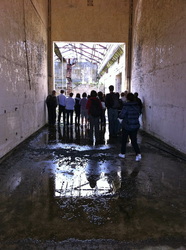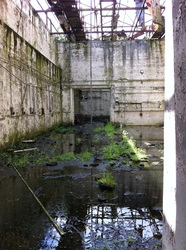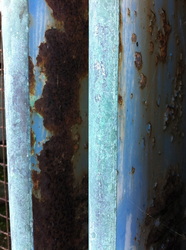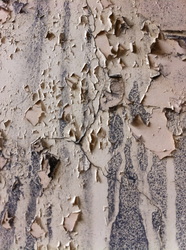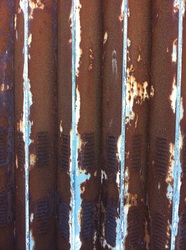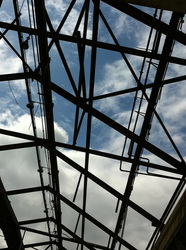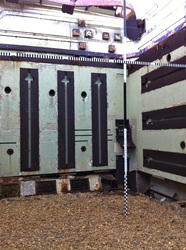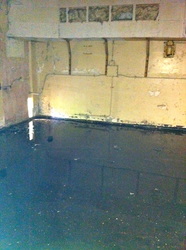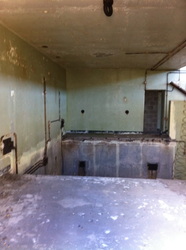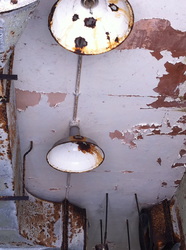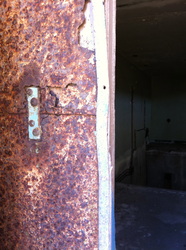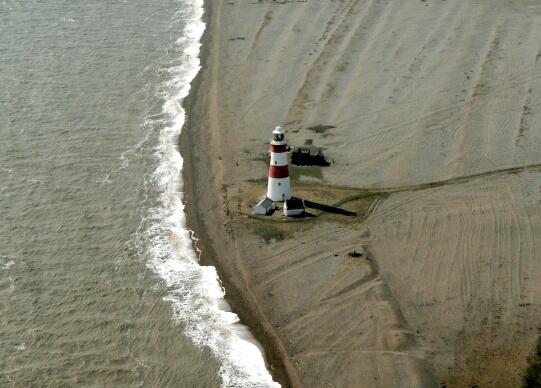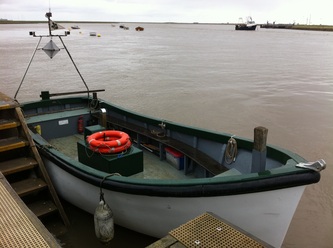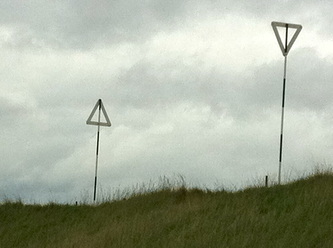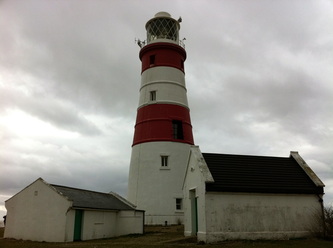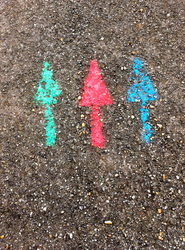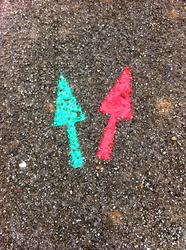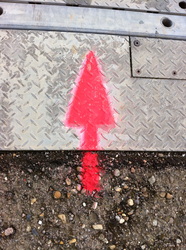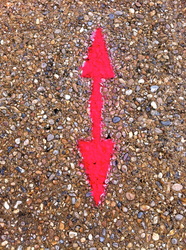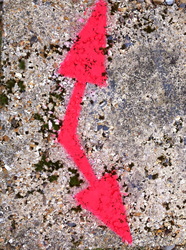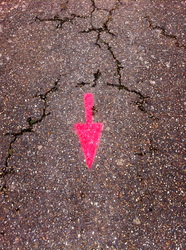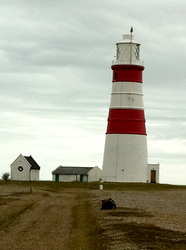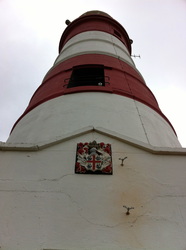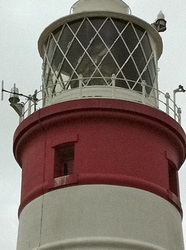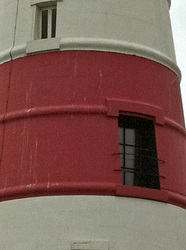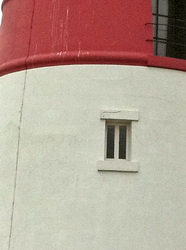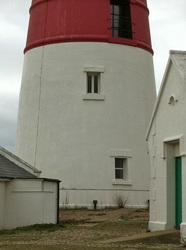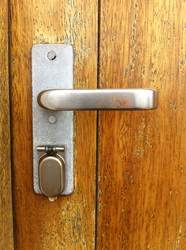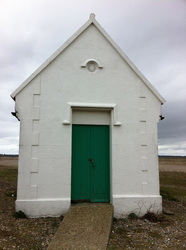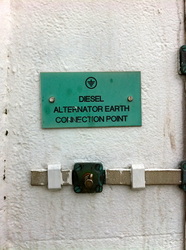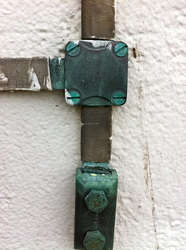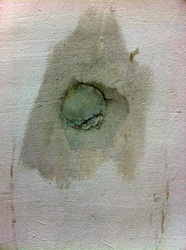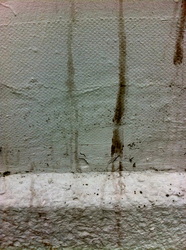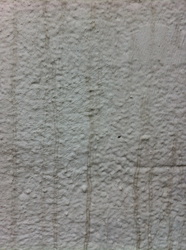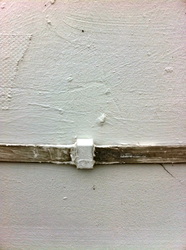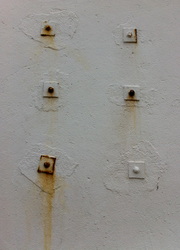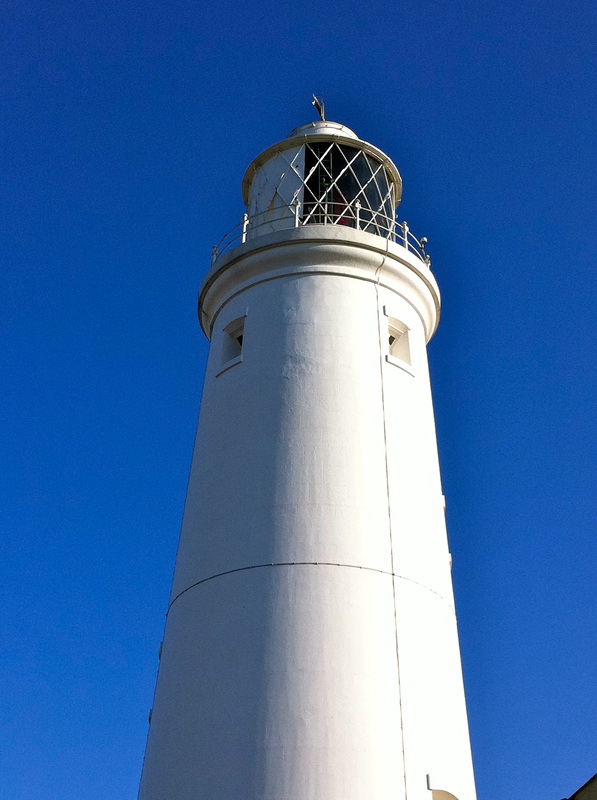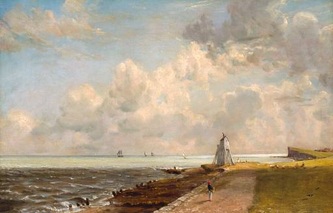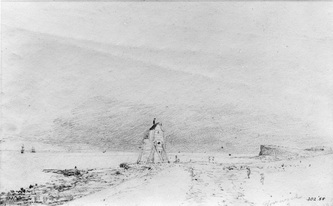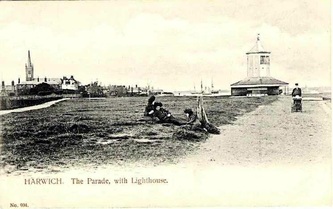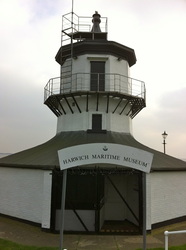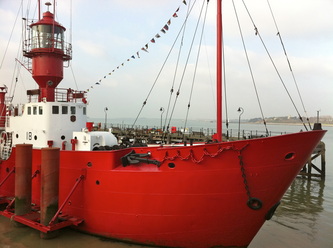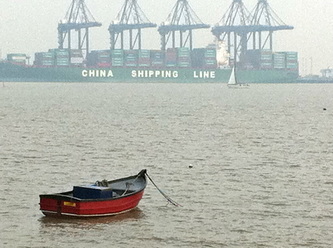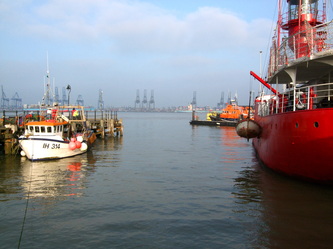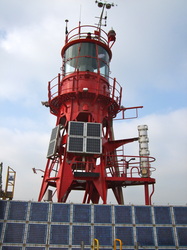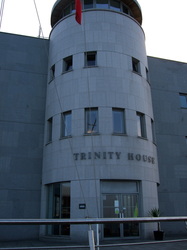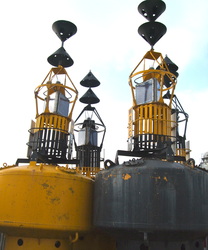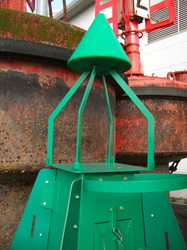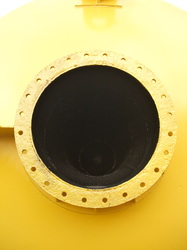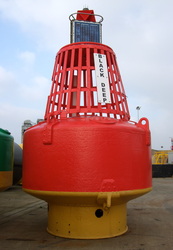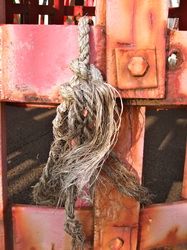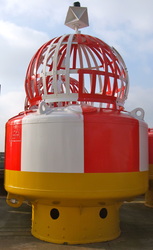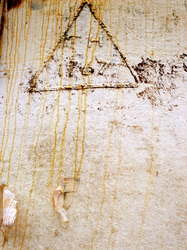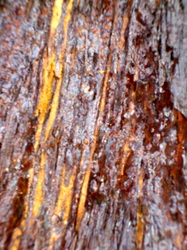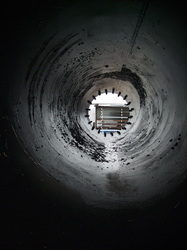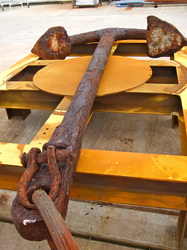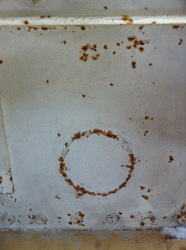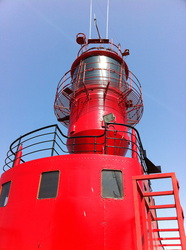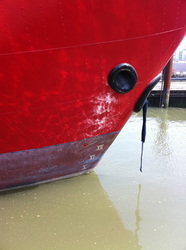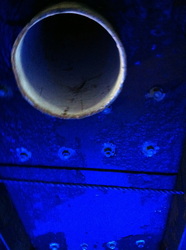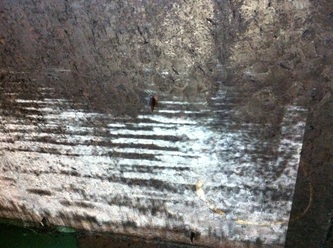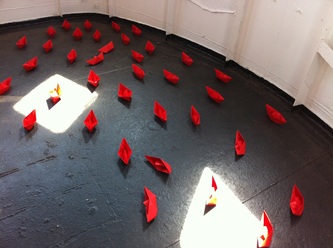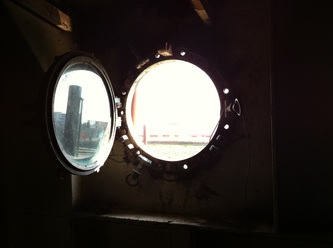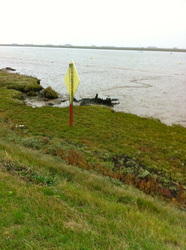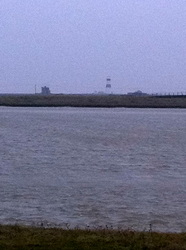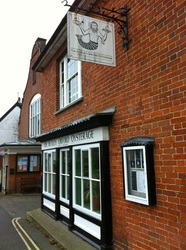|
Last summer I took part in an artists walk and talk visit to the AWRE site at Orford Ness with the artists Jane and Louise Wilson, who showed their work Blind Landing as part of Untrue Island, referring to the Blind Landing Experimental Unit there during the Cold War. The work made great use of the space with a series of site specific installations, using measuring sticks together with captured sound, (the measuring sticks were those used as a measure for scale in the building of film sets). The pieces are set in the old laboratory buildings, 'challenging the sense of scale and ruin, pointing to the architecture of forensics and camouflage, and highlighting their historic relevance as future ruins.' http://www.nationaltrust.org.uk/article-1356392567173
The site was fascinating to explore, with its previous use as an atomic weapons research site, it has its sinister side and still seems shrouded in mystery. However, what I found most fascinating was that particular sense of time and place that is embodied in its surfaces. It has made me think about the essence of place and the way that this can permeate a painting. With the deterioration of this place there is a sense of time, abandonment and loss - poignant, transient and thought-provoking - making us confront issues of mortality. The roofs of most of the buildings, having disappeared gave rise to pools of water after the recent rains - on a bright July day these blue pools seemed to contain the only element of hope - the potentiality of reflections in water - changing, moving, brighter than all the rest and when the sun fades they dim but don't become dilapidated! I wrote this at the time, meaning to put it on the blog and have just found it saved as a draft. Today Trinity House have decommissioned the Orfordness Lighthouse, the water having now got so close to the building. In this case the water is not an element of hope but one of impending damage, the shifting shingle spit a sign of possible climate change. It is sad to see the lighthouse closed, after over 200 years of use. Last summer Trinity House generously allowed me to go in and photograph it and I will soon put these pictures up here. Went over to Orford Ness on the boat, it being the first day of the new season and the National Trust have started running their boat over to the Ness every Saturday. It was cold, wet and windy, but interesting to finally get to the Lighthouse. A system of arrows directed the way and there are quite a few interesting buildings to encounter whilst you are there. The landscape there is an interesting mixture of grazing land, low lying ditches and lagoons and the wilder expanses of shingle which are completely open to the North Sea and the north-easterly wind which was blowing. Now an SSI with interesting habitats and a vast array of bird and plant life, its previous military uses are very much in evidence, both in the buildings including the AWRE site, where weapons such as Britain's first atomic bomb 'Blue Danube' could be tested in the labs, known locally as 'pagodas' and in the debris and signs warning of the possibility of unexploded ordnance. The lighthouse itself seemed perhaps more ordinary than I'd imagined it. Close to the sea edge and no doubt soon to be lost to the tides, but very well maintained by Trinity House. There was no sign of the generator, cables and fencing which is currently preventing a visit inside, or indeed any indication of what the lighthouse might be like inside, behind the surprisingly plain modern door.
Notice To MarinersRegion C10/12 C6 Orfordness AISNOTICE TO MARINERS
No.10/12 C6 EAST COAST OF ENGLAND ORFORDNESS LIGHTHOUSE (ALL Vol. A. 2258) Latitude 52° 05’.033N., Longitude 001° 34’.459E AUTOMATIC IDENTIFICATION SYSTEM (AIS) Amendment: Due to operational reasons the AIS transmission service has been permanently discontinued. MMSI No. : 992351016 By Order, Captain R.H. Barker Director of Navigational Requirements. Trinity House, London, EC3N 4DH. 7th February, 2012 Met the lighthouse keeper, Mr Seaman up at Southwold with Susan and Caroline last Wednesday. He was full of fascinating information about the lighthouses and has looked after Lowestoft, Southwold and Orford Ness from 1989 until 2011. The government's cuts to the lighthouse service and the coastguard seem very short-sighted - they are going to cause a real loss of service and potential loss of lives. They are planning to de-commission the Orford Ness lighthouse by the end of this year and after that it will probably be only a matter of time before it falls into the sea, with the shifting shingle bank and coastal erosion. Last year there was 16m between the high water mark and the tap at Orford Ness, but on one night in December 2011 4m disappeared into the sea.
Mr Seaman spoke of the lighthouses being important not only for their light but also with their electronic aids and as a visible day mark - this is why they are painted different colours or have a different number of stripes to each other - Happisburgh having 3 red stripes, whereas Orford Ness has 2. Mr Seaman's grandfather was lighthouse keeper at Southwold in 1935 when the light was electrfied. In the late 1980's the 3 kw flashing lamp was replaced with 100 w halogen lamp which can run on batteries. It is ironic that that electricity that was originally a bonus for the lighthouse keeper and left him with very little work to do, has in the end made him redundant. Modern ships with their high tech navigation equipment no longer want to pay their light dues and smaller fishing vessel and sailing boats do not contribute for the service. We are planning to go over to Orford Ness by boat in March to record the lighthouse and it will be interesting to spend time there and see it fully. Hopefully Peter West will take us over there in his motor boat The Regardless - we just need to clear the indemnity forms now with Paul Howe at Trinity House in Harwich. Yesterday I went up to Southwold to see Susan and Caroline and set up a new joint blog for our lighthouse project Eastern Light - we are using this as a working sketchbook/discussion platform between ourselves - think it will provide a useful way of working in between meeting up. Susan has been recording lighthouses on the Norfolk coast. My work has focused on Harwich as there is an overlap with another project I'm working on which is about the River Stour. On the Stour Valley project I will be retracing many of John Constable's steps, as well as those of my father, who in the 1950's worked surveying and looking after the Stour for the local river authority. The River Stour flows into the estuary at Manningtree - but following the estuary to the sea takes you to Harwich - so the natural place to start the work. I also came across this postcard view of the Low Lighthouse at Harwich from Huelse http://www.unc.edu~rowlett/lighthouse/engse.htn
Yesterday I went over to Harwich and had access to the Buoy Yard at Trinity House, where they refit buoys from all along the East Coast, as far afield as the North of Scotland down to Cowes on the Isle of Wight. Equipped with reflective jacket and hard hat I was able to record all the different shapes and sizes of buoys, in varying stages of refit. They are also refitting a Light Vessel at the moment with solar panels - the Sandette, which is usually to be found off the French coast near Le Touquet. It was a fascinating place and I found lots that might form the base of a series of paintings. Harwich too is an interesting town, with a lot of history and many fabulous Georgian buildings as well as the Electric Palace, built in 1911 and now beautifully restored, about to be able to show digital films as well as maintaining their traditional film projectors. Harwich's long naval history was evident, with plaques to the Mayflower and Samuel Pepys as well as boards documenting all the Man o' Wars that were built there together with RNLI rescues. Later I found I had been selected for the Parallax Art Fair, to be held in London in February 2012 and recently the exhibition submission by a group of us, 'Future Perfect', has been accepted by the Cut, Halesworth for 2013. Must get painting! Putting the flags out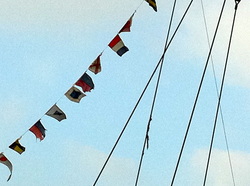 Light Vessel LV18 In April I visited a lightship LV21 in Kent that was being used for an Artists Residency by Figure Ground. I was intrigued by the ship, its materials, sense of space and place as well as its history and associations. I recorded it at the time, thinking that it may form the source of some future work. Today I went to Orford to look at the possibility of doing some collaborative work with photographers Susan Barrett-Kelly and Caroline Munn, who I met on the MA Fine Art course at NUCA, based on the Orfordness lighthouse, still owned by Trinity House, which have a base in Harwich, but about to become decommisioned. It was a bleak grey November day, the lighthouse barely discernible through the mist and its red and white form muted towards invisibility, but it certainly has promise. Now I need to get permission to visit it from Trinity House and also find a boat to get across to the Ness, a strange land of pagoda'd buildings used by the Ministry of Defence for testing various weapons of mass destruction during the Cold War and now deserted and desolate. The Butley Orford Oysterage provided a welcoming and warm place to discuss ideas and eat delicious shellfish!
|
Archives
May 2014
Categories
All
|
